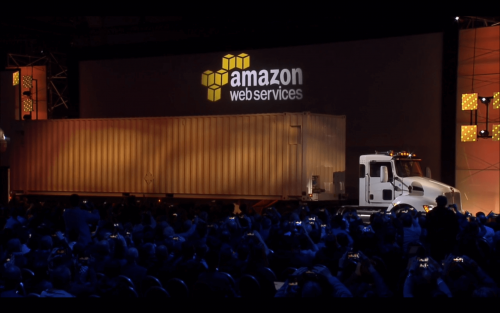
This is awesome!

This is awesome!
“Understanding disk usage in Linux” is a well written in-depth look into the Linux filesystem layer and how things work under the hood. This is probably not something most people would have to deal on a day-to-day basis, but it is very useful for anyone doing system administration and looking for the better understanding of operating systems.
Jeff Geerling shares his tips for “Getting the best performance out of Amazon EFS”. Given how (still) new the Amazon EFS is and how limited is the documentation of the best practices, this stuff is golden.
tl;dr: EFS is NFS. Networked file systems have inherent tradeoffs over local filesystem access—EFS doesn’t change that. Don’t expect the moon, benchmark and monitor it, and you’ll do fine.
Back in my college days, I had a professor who frequently used Andrew Tanenbaum‘s quote in the networking class:
Never underestimate the bandwidth of a station wagon full of tapes hurtling down the highway.
I guess he wasn’t the only one, as during this year’s Amazon re:Invent 2016 conference, the company announced, among other things, a AWS Snowmobile:
Moving large amounts of on-premises data to the cloud as part of a migration effort is still more challenging than it should be! Even with high-end connections, moving petabytes or exabytes of film vaults, financial records, satellite imagery, or scientific data across the Internet can take years or decades. On the business side, adding new networking or better connectivity to data centers that are scheduled to be decommissioned after a migration is expensive and hard to justify.
[…]
In order to meet the needs of these customers, we are launching Snowmobile today. This secure data truck stores up to 100 PB of data and can help you to move exabytes to AWS in a matter of weeks (you can get more than one if necessary). Designed to meet the needs of our customers in the financial services, media & entertainment, scientific, and other industries, Snowmobile attaches to your network and appears as a local, NFS-mounted volume. You can use your existing backup and archiving tools to fill it up with data destined for Amazon Simple Storage Service (S3) or Amazon Glacier.
Thanks to this VentureBeat page, we even have a picture of the monster:

100 Petabytes on wheels!
I know, I know, it looks like a regular truck with a shipping container on it. But I’m pretty sure it’s VERY different from the inside. With all that storage, networking, power, and cooling needed, it would be awesome to take a pick into this thing.
Here are some great news from the Amazon AWS blog – the announcement of the Elastic File System (EFS):
EFS lets you create POSIX-compliant file systems and attach them to one or more of your EC2 instances via NFS. The file system grows and shrinks as necessary (there’s no fixed upper limit and you can grow to petabyte scale) and you don’t pre-provision storage space or bandwidth. You pay only for the storage that you use.
EFS protects your data by storing copies of your files, directories, links, and metadata in multiple Availability Zones.
In order to provide the performance needed to support large file systems accessed by multiple clients simultaneously,Elastic File System performance scales with storage (I’ll say more about this later).
I think this might have been the most requested feature/service from Amazon AWS since EC2 launch. Sure, one could have built an NFS file server before, but with the variety of storage options, availability zones, and the dynamic nature of the cloud setup itself, that was quite a challenge. Now – all that and more in just a few clicks.
Thank you Amazon!